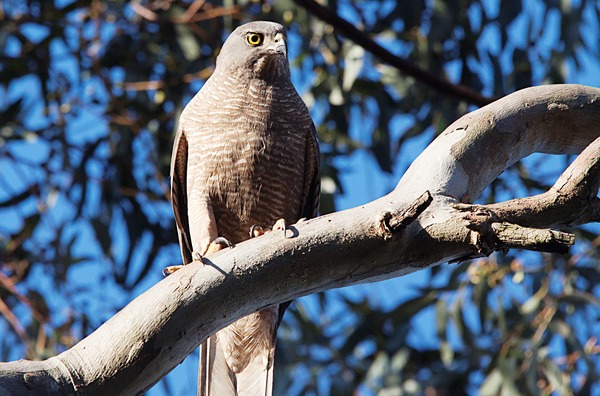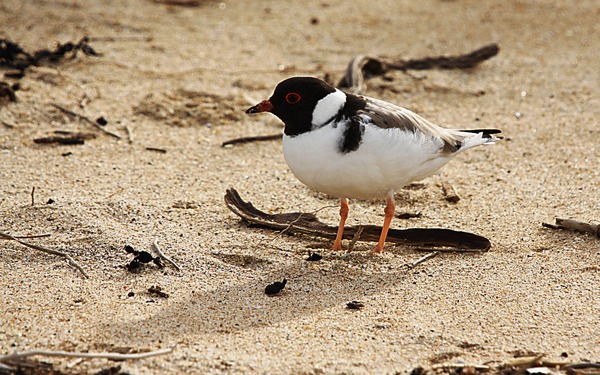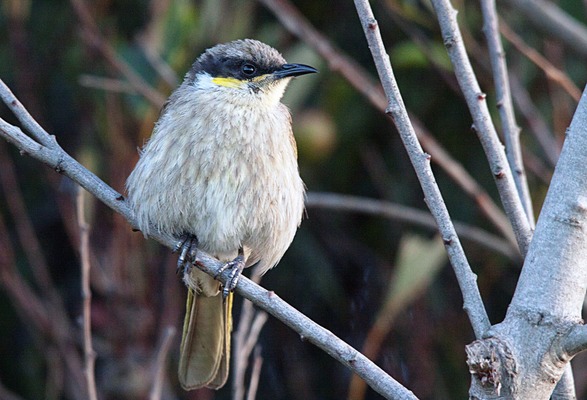Once again it’s been a bumper few weeks for exploring the Bellarine.
The sun has been shining, the birds have been singing, and all has been well with the world.
The hooded plover nesting season is well and truly under way. The Hooded Plover is a medium-sized (19cm to 23cm) plover, which has a black head and a white nape, with white underparts. The iris is dark brown, with a red eye ring, and the legs are pink.
Hooded plovers are listed as ’vulnerable’ in Victoria, with only around an estimated 600 birds left in our state.
Currently there are four nests between Point Lonsdale and Collendina, and all being well, there will be hatchlings around Christmas Day. One of the hooded plovers that has lived on Collendina Beach for years, known as AD (because of the letters on its orange leg band) has unfortunately not been sighted in over five months. AD’s unbanded partner has now taken up with JU from Guvvo’s Beach near Anglesea, and hopefully they will nest soon.
Along 13th Beach, SN and CR have produced the first chick for the Bellarine on 29 November and Barwon Coast has set up a Temporary Exclusion Zone in order to give this chick the best possible chance at survival, which is a tremendous initiative by Barwon Coast.
When hooded plover chicks hatch on the beach, there will be signs asking for people to keep their dogs on a lead in roped off areas. Dogs also have to be on a lead at all times between 6W and Point Lonsdale, regardless of whether there are hooded plover nests or not.
Breeding success for hooded plovers can be severely limited due to a range of natural and human related factors. High seas can wash away nests, eggs or chicks, and predation by foxes, cats, silver gulls, magpies, ravens and other scavengers can occur. Also disturbance by dogs, humans and the physical crushing of nests and eggs by vehicles, horses and foot traffic can occur. Due to the long incubation period, and the inability of chicks to fly for at least three weeks after hatching, each clutch is vulnerable to a range of threats for nearly a two-month period. If anyone is interested in helping to protect these birds, you can access details about volunteering at www.barwoncoast.com.au/friends-hooded-plover-bellarine.
I was very happy to see two species of migratory shorebirds at the Ocean Grove boat ramp on the Barwon Estuary the other day. I spotted two common greenshanks and two sharp-tailed sandpipers. It’s great to see these amazing birds around these parts. Both species of bird migrate to Australia from the Northern Hemisphere during our spring and summer months.
The other lovely bird I have seen this fortnight was a singing honeyeater, which was spotted at Barwon Heads Bluff, where they are commonly seen.
The singing honeyeater has a plain grey-brown plumage, with a distinctive black streak through the eye from the bill to the neck, bordered by a yellow streak below the eye. The singing honeyeater is found in many areas of Australia, in open shrublands, coastal regions, and low woodlands that contain wattles or acacias.
The singing honeyeater makes a large range of clear, noisy calls, which are usually lively and melodious. They have been known to start ’singing’ well before sunrise. Interestingly the call of the singing honeyeater varies according to where it lives. Scientists have found that singing honeyeaters from mainland Australia did not respond to the songs of singing honeyeaters from an island off Australia’s west coast.
When checking out ’Birdline Victoria’ I noticed that an eastern koel was heard in the middle of the night in Bellevue Drive, Ocean Grove. The male common koel is easily identified by its glossy black plumage, tinged with blue and green, and striking red eye. Most koels move between Australia, New Guinea and eastern Indonesia. During breeding season, they are found in northern and eastern Australia, south to about Nowra, New South Wales, although occasional birds are encountered further south, like the one heard in Ocean Grove. Koels have a very distinctive call; the male common koel has a loud, ascending whistle or ’koo-el’ and the female is a repetitive ’keek-keek-keek-keek’. I’ve only seen a common koel in Moruya, NSW, so would love to see one around here.
I’m going to include my favorite image of the year with the article, and it’s a magnificent brown goshawk taken at the Ocean Grove Nature Reserve.
I just would like to wish all of the Voice readers a wonderful, safe and happy Christmas and a thoroughly enjoyable 2018. I hope that Father Christmas will run out of all of his copies of the ’Australian Bird Guide’. Enjoy!
Cheers and good luck to the hoodies.
Jen Carr, jennifer.carr6@bigpond.com









